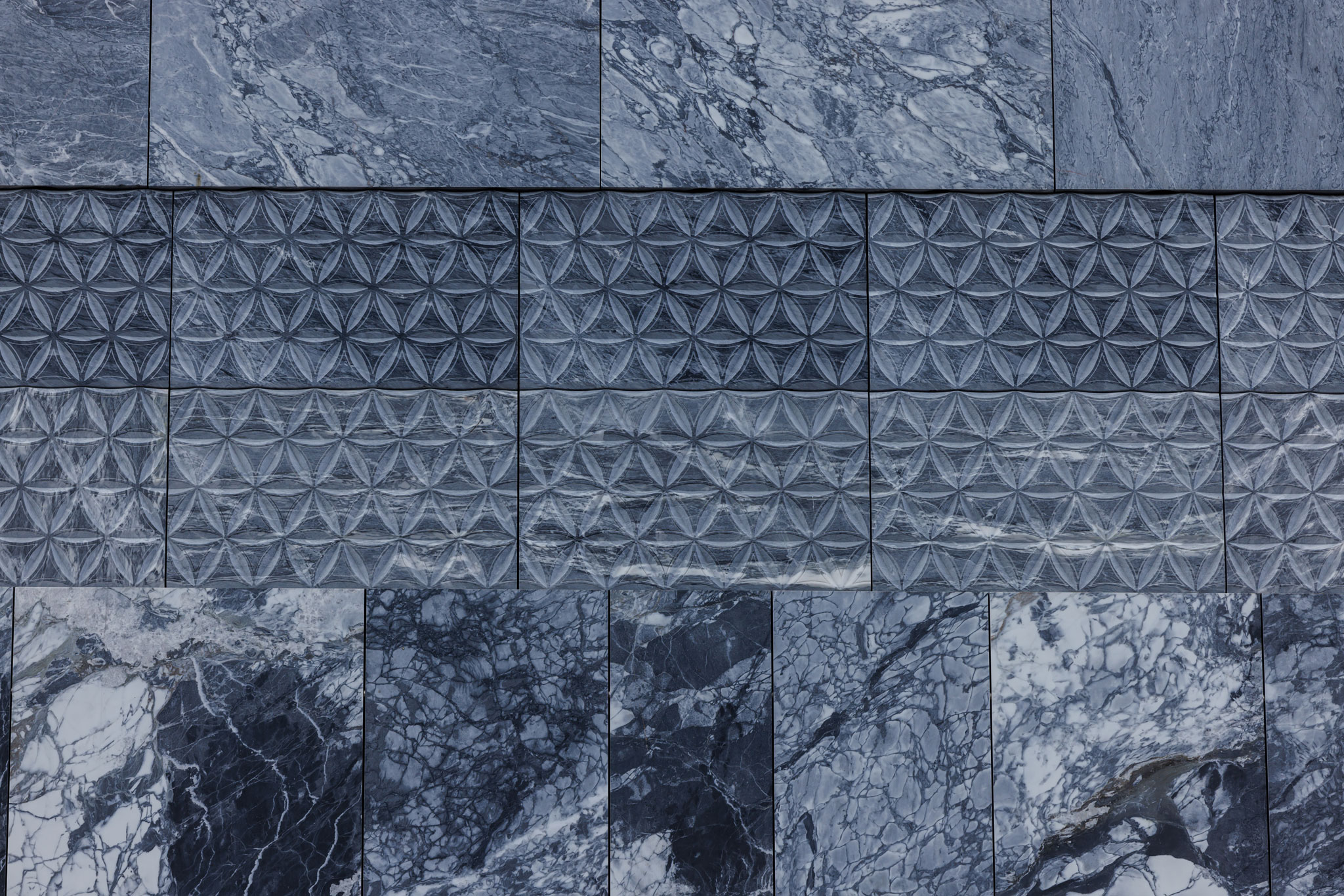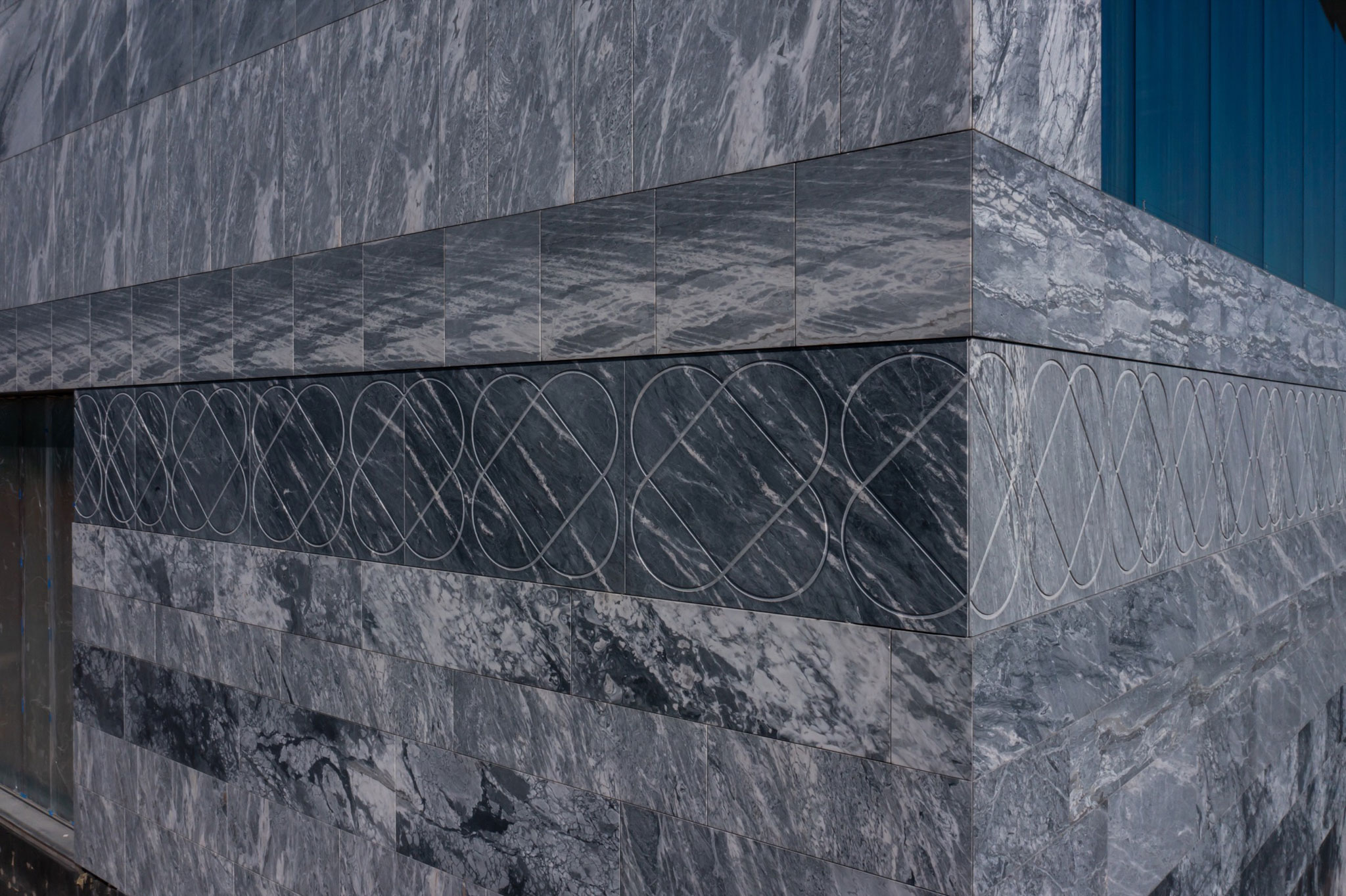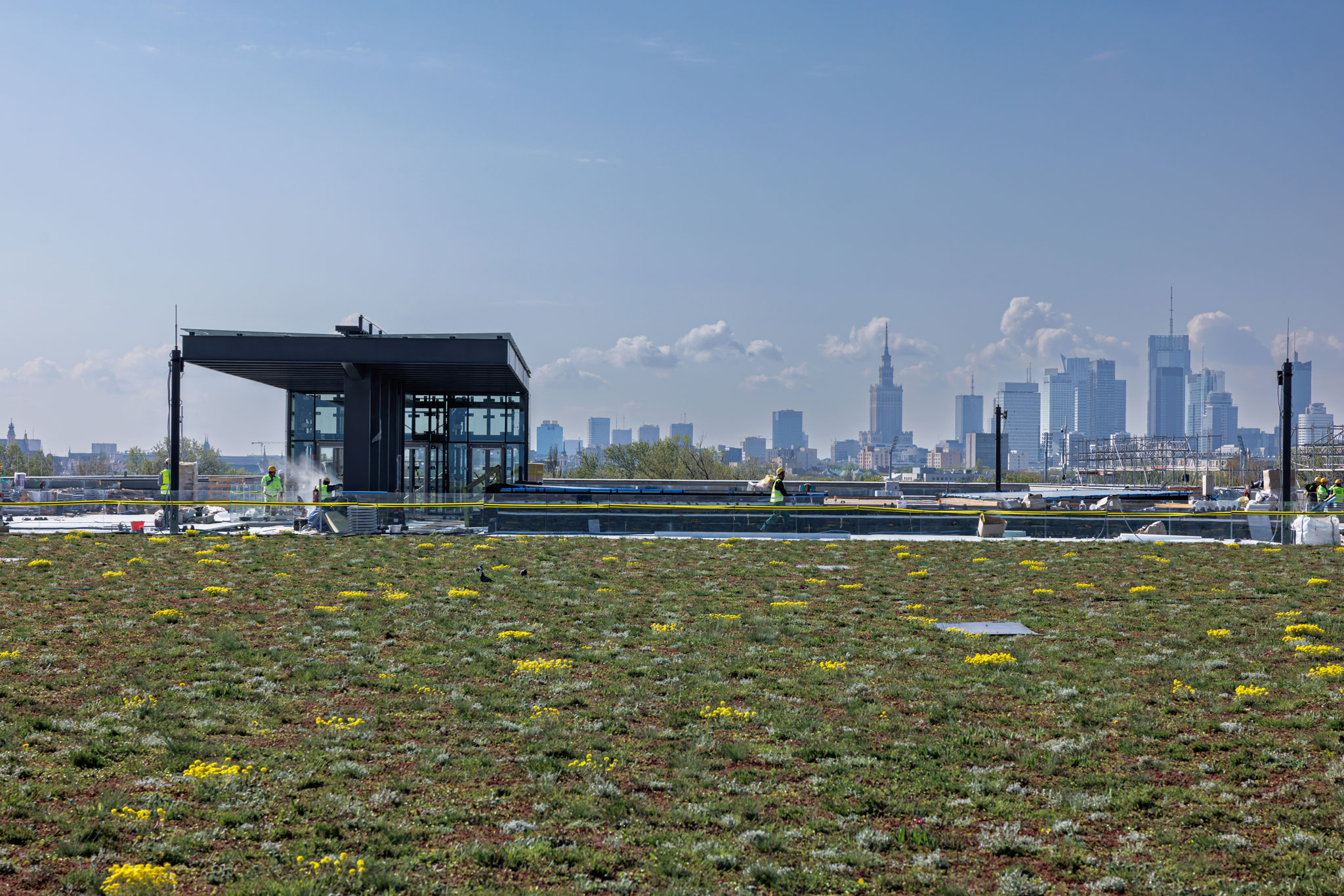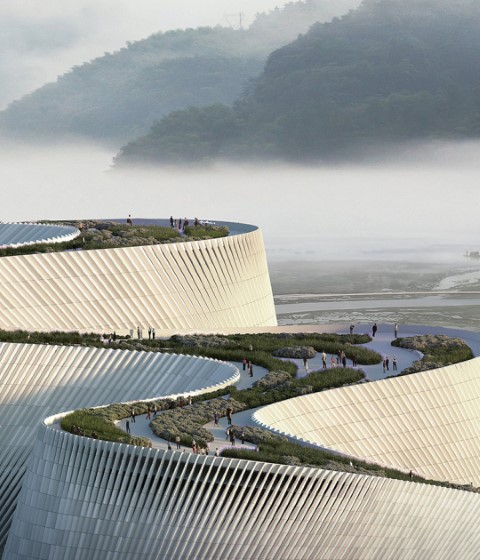WXCA architects designed the building of the Polish History Museum as a metaphor for history preserved in a monolithic body. It is a philosophical story about historical processes in which stone has become the language of narrative about discovering traces of the past. The minimalist form of the Museum is somewhat reminiscent of a slightly hewn stone block.
“The façade of the Polish History Museum has been laid with marble slabs of varying grain. They are arranged in horizontal strips, emphasizing the layered, stratigraphic structure. It is a structure inherent to geological matter, but also to our archaeology – to the natural, social, and cultural processes occurring one after the other. That's why we opted for marble, which is a stone with a very distinctive grain. Each of the marble slabs is different, unique, just as all history consists of unique, individual events.”
Architect Krzysztof Budzisz of the WXCA studio.
Within these layers, motifs from the Polish architectural tradition have been incorporated, as if they were archaeological remnants from different periods. However, these are not literal quotations, but ornaments subjected to geometric transformations, which are a reference to such patterns as, among others, the relief from the Gniezno Doors, the Gothic diamond vault, or the motif from the modernist Spodek arena in Katowice.

Polish History Museum Building by WXCA. Photograph by Bartek Barczyk.

Polish History Museum Building by WXCA. Photograph by Bartek Barczyk.
The large windows on the exhibition floor and glazed openings between the ground floor “city” blocks extending into a network of interrelated spaces within its interiors are a materialization of the concept of openness and friendliness of the Museum, of discoveries, of multidimensional approaches to history, of the freedom of choice of paths of cognition, and of creating personal narrations.
The glazed openings in the building’s facade are also a way of communicating to the surroundings any ongoing activities taking place in various parts of the Museum. Light, both natural, flooding in from the outside through the structure’s openings, and artificial comprise one of the key tools in shaping the Museum’s atmosphere, penetrating and visually joining its internal spaces.

Polish History Museum Building by WXCA. Photograph by Bartek Barczyk.
In addition to the exhibition area and rooms for the storage and conservation of artifacts, the Polish History Museum includes numerous spaces with a cultural function: a concert hall with 600 seats, a screening and theatre room, a library, conference and education rooms, and a terrace to enjoy a panoramic view of Warsaw.
“We designed the interior plan in such a way that the movement between the different functional blocks resembles an immersive experience of flowing inside a stone monolithic block, meandering, entering the depths of history, discovering its multidimensionality".
WXCA
The Polish History Museum will be one of the most advanced currently in Poland and in Europe; covers a surface area of almost 45,000 square meters, a two-level parking lot for employees and visitors has been designed, as well as parking places for coaches, and plans to receive around 500,000 visitors a year.










































